SWORN is a run-based action-RPG with meta progression elements that follows a hero’s efforts to topple a corrupt kingdom ruled by a cursed king. The kingdom is Camelot, and the cursed king is Arthur, who upon completing the quest for the Holy Grail asked to be admitted into the Council of the Fae, supernatural beings who embody concepts as widespread as wind, fire, darkness, and luck. Angered that some of the Fae refused his request, Arthur attacked them all then turned his wrath on the people of Camelot. Empowered and ensorcelled by the holy waters of the Grail, Arthur and his Knights of the Round Table seem invincible. I play as the Soulforged, a nameless and formless Fae whose innate ability of rebirth makes them the only warrior who can compete with Arthur’s immortality. With help from the Fae leaders and a gaggle of supporting characters from Arthurian legend, the Soulforged sets out on a quest filled with action and death to dethrone the terrible king.
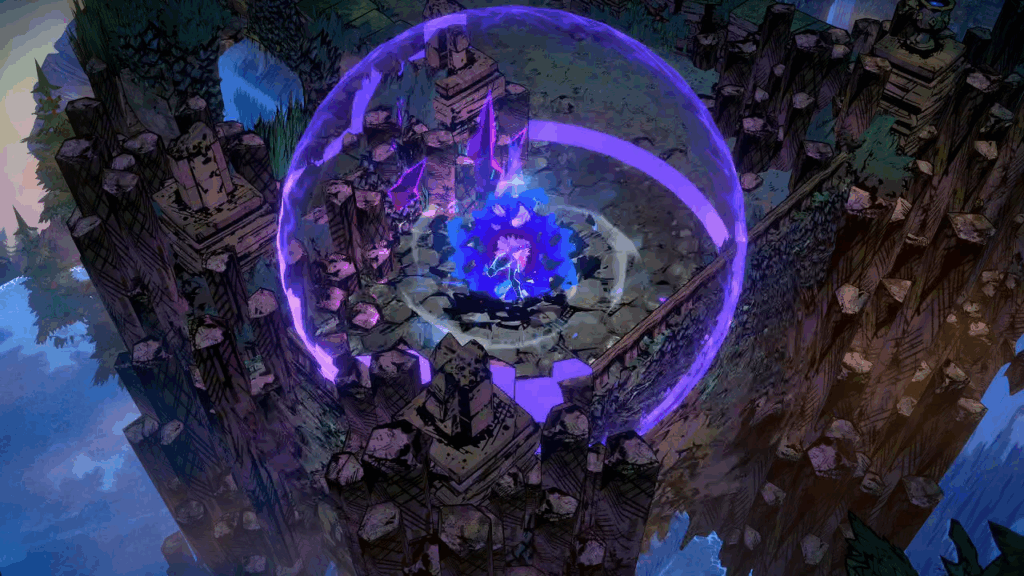
Though I am able to glean some idea of the conflicts around which SWORN builds its design over time, it doesn’t make much effort to set up these details. There is no exposition. Upon beginning a new game, the Soulforged player character is dropped straight into their first run and told to start killing. As I play, they encounter Arthurian characters who fill in some of the background. But only some. What is the exact nature of the Fae? How are they able to help the Soulforged even after apparently being killed by Arthur? What is the origin of the corruption within the Holy Grail that spreads to Arthur and the Knights of the Round Table? Why were some of Arthur’s allies corrupted but others were not? These essential details are never elaborated upon, and since SWORN does not have a proper beginning or ending at the time of this writing, I am left unfulfilled by intriguing questions that have no satisfying answers.
I do not have any lingering questions about the Soulforged player character because they are a deliberate blank slate. This makes them a poor conduit for experiencing a story but a wonderful base on which to build a multifaceted action hero. The vast number of combinations available to customize my unique Soulforged hero is SWORN’s most alluring feature.
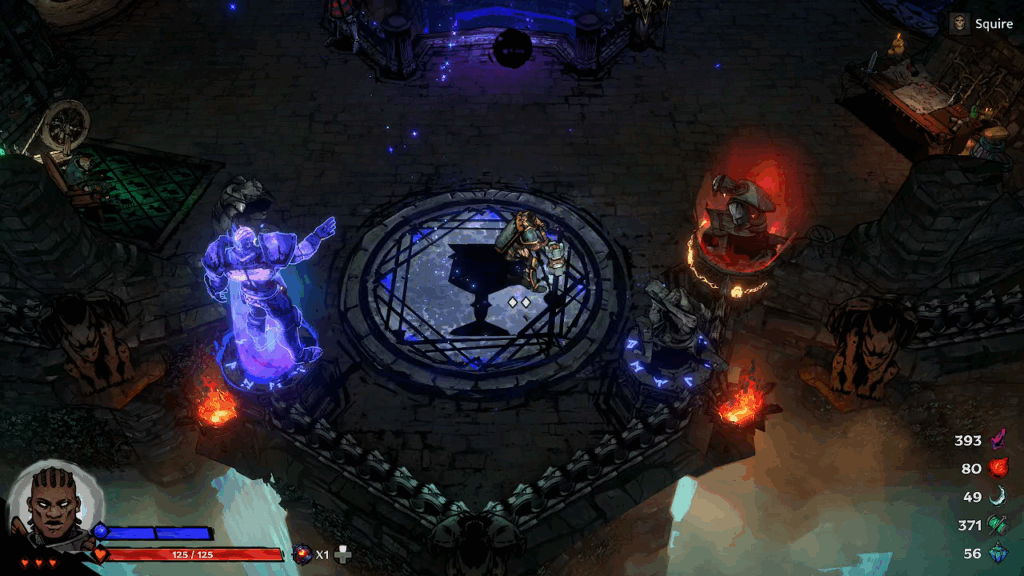
The number four encircles every aspect of the Soulforged. To start, there are four classes they may adopt that emphasize their nameless and formless nature. The Vigilante and the Rook are both men but are otherwise dissimilar. The Vigilante is light-skinned; the Rook is dark. The Vigilante is lithe and agile; the Rook is broad and muscular. The two physical men contrast further with the Monk and Sentinel. Both have metaphysical abilities, and while the Monk is the only woman, the Sentinel has the most effeminate build and movements. These two also contrast, with the Monk emphasizing a faith-based set of supernatural powers that channels light and lightning while the Sentinel has an overtly magical skillset. The four classes are not separate characters. They are all bodies the Soulforged temporarily adopts in their mission to defeat Arthur.
The four classes are further differentiated by their weapons and magical abilities. These choices compound the differences between the four classes beyond the surface level. The Vigilante can choose between a sword, staff, bow, and chakrams. All four offer different ranges while still maintaining an emphasis on fast and precise attacks. The Vigilante may also choose from four magical abilities. The ranged damage offered by a thrown Assassin Dagger pairs naturally with the sword and staff while the melee-focused Shadow Strike, Blade Rush, and Dagger Flurry can help to offset the limitations of the bow and chakram. Nothing mandates any of these choices. The Soulforged may field any of the Vigilante’s weapons with any of their magical abilities. The same is true for the other classes; each supports four weapons and four spells that may be mixed and matched until I find a combination that works best for me.
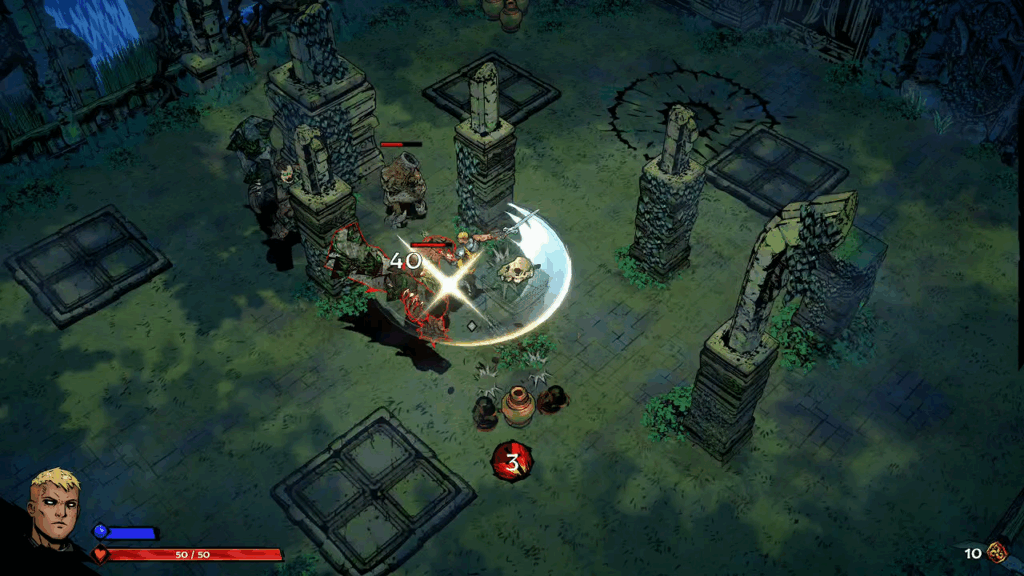
Once customized, I deploy my Soulforged on their mission to defeat Arthur in a run called a Quest. In disappointing contrast to the great variety allowed in customizing the player character, every Quest is broadly the same. It begins in the Wirral Forest, travels to the plagued village of Cornwall, then into a besieged seaport called Deep Harbor, and ends in Camelot’s castle. Despite this geographical variety, regions do not have distinct appearances. SWORN’s Camelot is appropriately muddy and wild, enhanced by a graphical style featuring thick lines and heavy shadows reminiscent of Mike Mignola’s work, but the overabundance of brown and green colors makes every area blend visually together.
What does make each of SWORN’s four settings distinct are the enemies the Soulforged combats within them. Wirral Forest is filled with animals and hunters, both groups crazed and mutated by the corrupted Grail then turned in common cause against the Soulforged. Cornwall is overrun by ratmen who saturate the battlefields with clouds of poison gas, which are made even more difficult to avoid by mud pits that slow the Soulforged’s movement. Deep Harbor is overwhelmed by monsters who attack from the sea, as though the corrupted Grail has joined forces with Cthulhu and invited the yawning horrors to attack Camelot’s sailors.
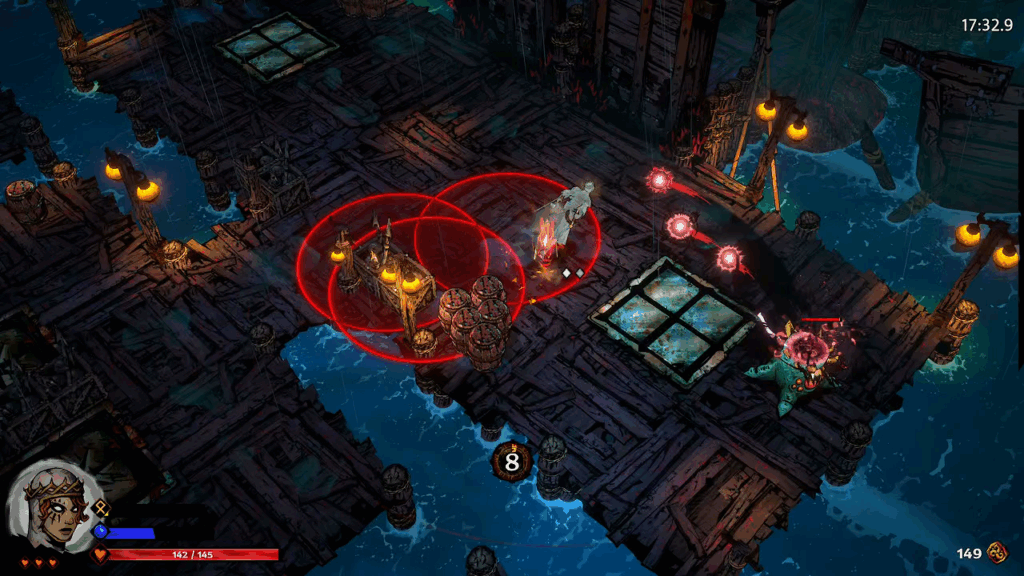
Regardless of which body the Soulforged currently inhabits, fighting with them is heavily reliant on effective positioning and smart movement. Most enemy attacks are presaged by exaggerated windups. The rest outright mark which areas of the ground their coming attack will affect. The Soulforged can run away from affected areas or use their dash, but must wait for a short cooldown to reset before it may be used again. Once they are positioned to safely counterattack, they may use one of their magical abilities—also governed by a short cooldown—or sustained light and heavy attacks from their primary weapon. These attacks are as diverse as the weapons themselves, with the Monk able to summon bolts of lightning using their humble mace and the Rook spinning like a top while wielding their warhammer.
Each region is capstoned by an encounter with one of the Knights of the Round Table. There is a prime opportunity here to explore some of the more obscure Round Table knights. Instead we get three of the most recognizable. Gawain has been mutated into a horrible golem who crashes his bulk around the battlefield in between slams with his massive battleaxe. Percival reflects the poisonous rat horde in Cornwall, becoming a grinning fool who charges around his arena with his lance like a Pied Piper let loose at a renaissance faire. Bedivere, reimagined as a foul siren, floods her domain with drowning waves and rampaging currents while periodically slashing at the Soulforged with a massive spear. All three must be defeated on every Quest while the Soulforged fights their way to Arthur in Camelot’s throne room.
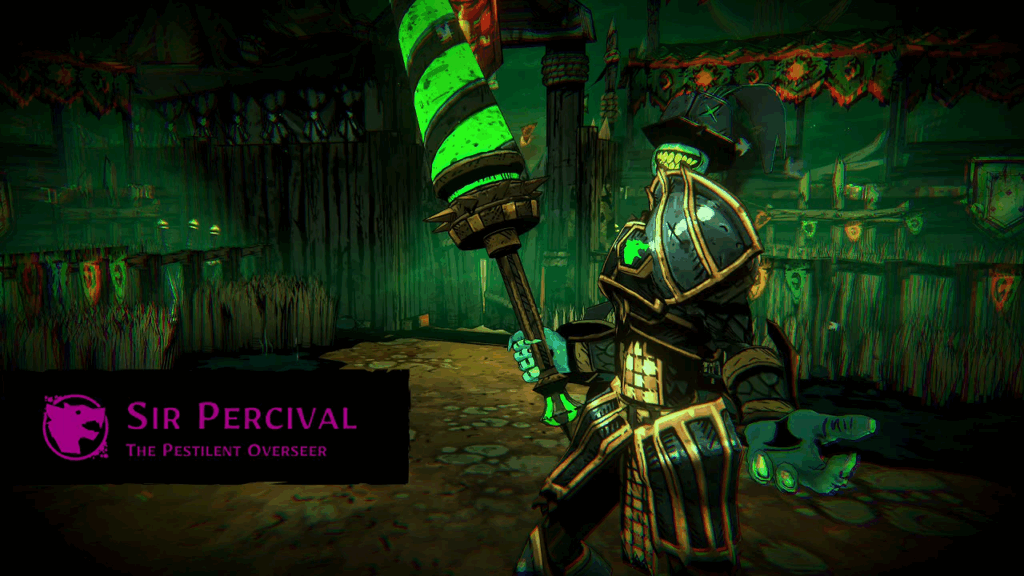
Each step of a Quest is divided into small, discrete rooms. Each contains a unique challenge, usually as simple as defeating every enemy within the room. Sometimes the challenge is more elaborate, like navigating a labyrinth filled with spike traps or ferrying droplets of Grail water to quench the thirst of a magical plant. When the Soulforged completes a room’s challenge, they are given a reward. These rewards are temporal, disappearing when the Soulforged fails or completes their current Quest, and confer significant improvements to one of their abilities. A preview of a coming room’s reward appears on its door before entering, giving the Soulforged a chance to make an informed decision. Collecting as many rewards as possible is key to victory.
There is a broad selection of rewards the Soulforged may earn and learning the differences between them all is one of SWORN’s sharper learning curves. A stone that once held a legendary sword provides a significant power boost to one of the Soulforged’s weapons or spells. A magical heart increases the Soulforged’s total hit points. A handful of gold coins does not offer any immediate advantages but may be bartered in a shop later in the Quest for other rewards. The most important rewards are the banners that summon one of the Fae Council. Speaking with a Fae leader grants a random blessing to the Soulforged.
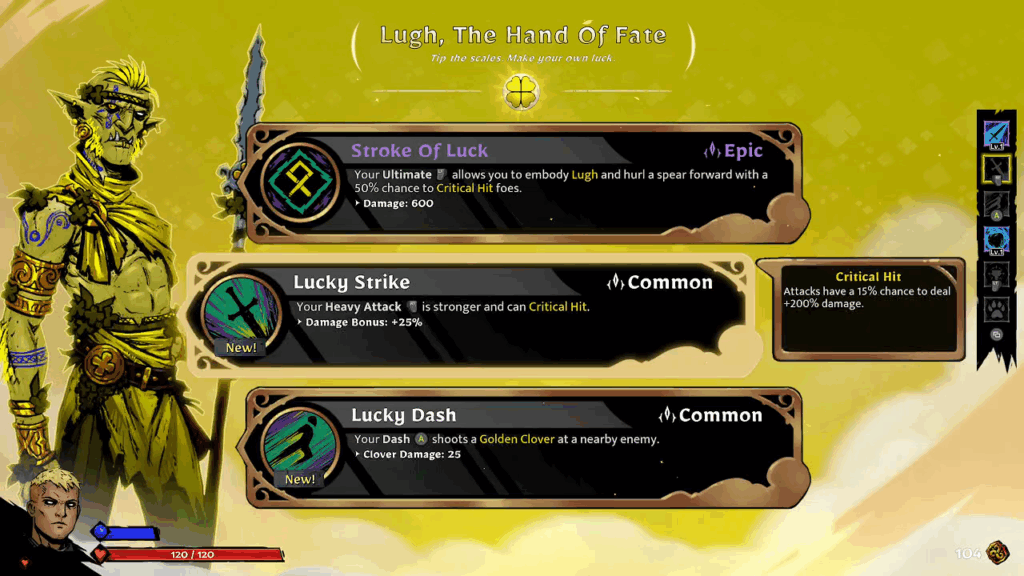
Each Fae specializes in a particular kind of magic. Oberon, King of the Fae, enhances the Soulforged’s attacks with increased speed and power that grow with every swing, thrust, or pluck from their weapon. Lugh, the Hand of Fate, gifts a flat damage increase to all attacks and adds a high chance for an attack to crit, increasing its damage even further. Babd, the Dark Omen, provides an even more impressive damage increase, but only when the Soulforged’s attack hits an opponent in the back. Learning which Fae provides which effects and which synergize best with their current weapons and abilities is one of the main lessons I must learn before the Soulforged can complete their first Quest.
The trouble with this Fae blessing system is it feels like it puts too much pressure on specializing the Soulforged. Enemy hit point meters grow incredibly thick the deeper the Soulforged progresses on their current Quest. In order to stand a chance against Arthur and his band of faceless knights in Camelot, they are practically demanded to pick one of their attacks—light attack, heavy attack, or magic attack—and pick only rewards that empower that attack, ignoring two-thirds of their skillset for the remainder of the Quest. Whichever reward happens to appear in the first room puts inordinate weight on the direction the Soulforged will develop for the remainder of their current Quest. If they fail to stack enough upgrades, or if the random nature of room rewards fails to provide them, then the battle with Arthur can turn from a manageable duel against a tough foe into an attritive slog with a stalwart who only takes fragments of damage to their colossal hit point meter.
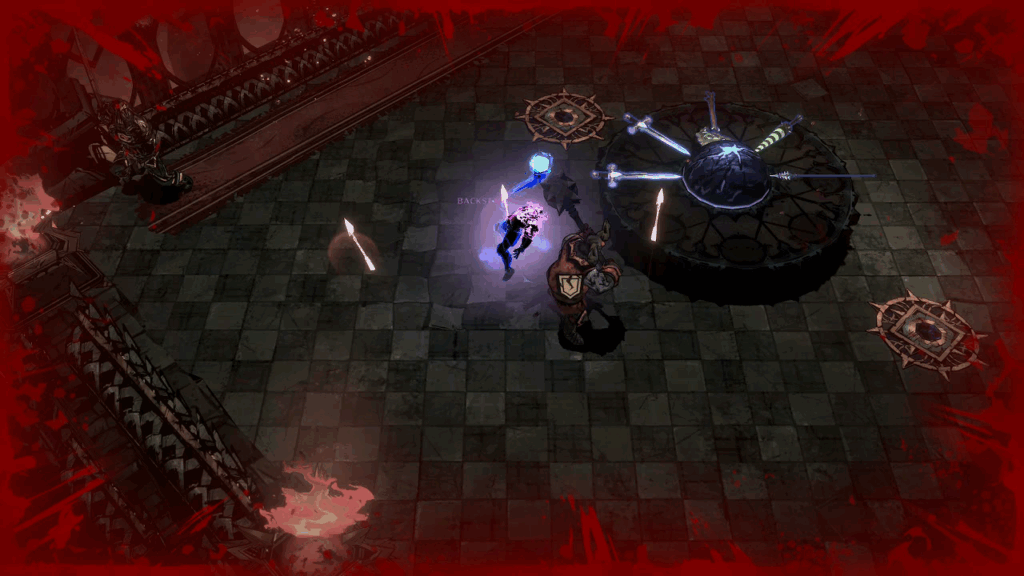
Though I have some concern that SWORN’s enemies are tuned perhaps a little too highly, I do reach a point in skill at manipulating room rewards and knowledge of the Quest’s basic enemies to where I am able to reliably finish the Soulforged’s Quest on most attempts. This is where I begin challenging the higher difficulties. The first time Arthur is beaten, I learn that I have only been playing on the Squire difficulty. Starting on the Soulforged’s next Quest, I am able to choose new difficulty levels, beginning with Knight and ascending four ranks to Sovereign. Besides the expected improvements to enemies, granting them greater hit point totals and damage, SWORN’s higher difficulty levels add interesting wrinkles to the Quest: Corruption and Curses.
Corruption is a new effect dealt by some enemies that lowers the Soulforged’s hit point total for the remainder of that Quest, adding an additional sting to the consequence for getting hit by an attack. Curses are new modifiers added onto every room in a Quest, adding effects like further increasing enemy damage, increased cooldowns placed on the Soulforged’s dash or magic abilities, and new hazards like a vortex that ricochets around the room and damages the Soulforged if they touch it. The idea behind Curses seems to be that a bad effect may make me reconsider which room the Soulforged should visit next, but the necessity for stacking certain effects removes any weight from the decision. The Soulforged needs certain upgrades to succeed, regardless of any additional hazards guarding them. Curses simply add another unavoidable obstacle the Soulforged must overcome to stay competitive.
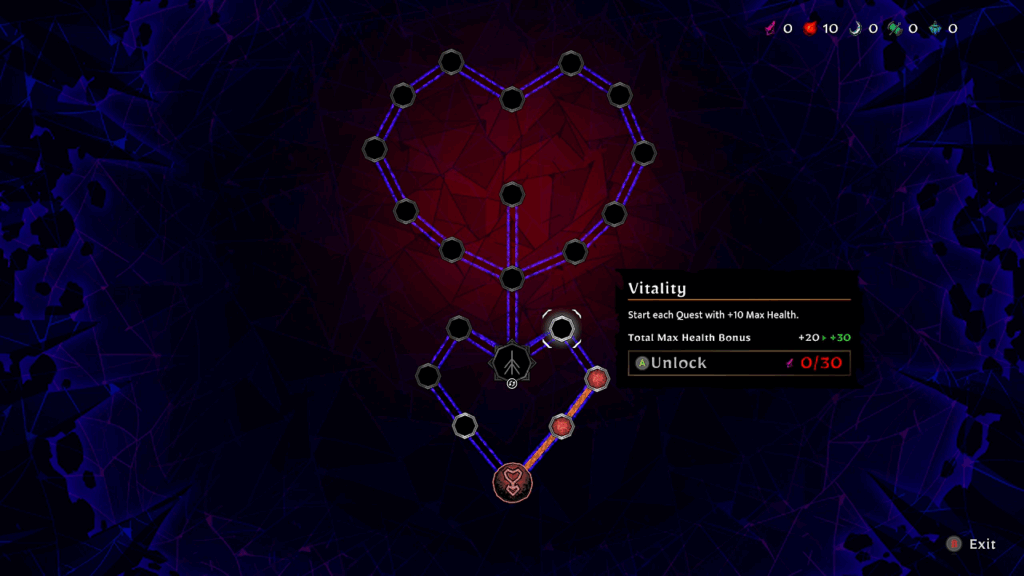
Each time the Soulforged dies, they are reborn in Carmarthen, Merlin’s magically protected tower. Carmarthen is a small hub area densely packed with nonplayer characters and interactable objects. Most are not available during the Soulforged’s first visit, appearing only when they meet the uncorrupted members of Arthur’s court during a Quest and send them to the tower’s safety. Merlin helps the Soulforged mount crystals in a mystic frame, providing improvements to their defensive statistics that carry across all future Quests. Nimue, the Lady of the Lake, improves the Soulforged’s weapons with greater damage and new effects. Guinevere makes new shops, opportunities for healing, and more esoteric effects appear in both Carmarthen and on future Quests. The Fisher King alters the appearance of the Soulforged’s different classes. Eventually, even Lancelot turns up. He does not offer any upgrades, but instead hints at a threat greater than Arthur corrupting the Grail that may be confronted if the Soulforged helps him on their next Quest.
None of the services offered by these characters are free. Each uses a unique currency obtained as a reward for completing rooms in Quests. They are as varied as crystal shards, fairy embers, moonstones, flasks of grail water, and bolts of magical silk. Acquiring these currencies requires a difficult choice on each Quest: Does the Soulforged pick a room containing a temporary upgrade that will make them more powerful on their current Quest, or one rewarding a currency that will contribute to the success of future Quests? It can be a frustrating choice, especially in a fresh save file, as the Soulforged is essentially doomed to repeated failure against weak enemies until they’ve gathered enough crystal shards to buy Merlin’s essential, early upgrades.
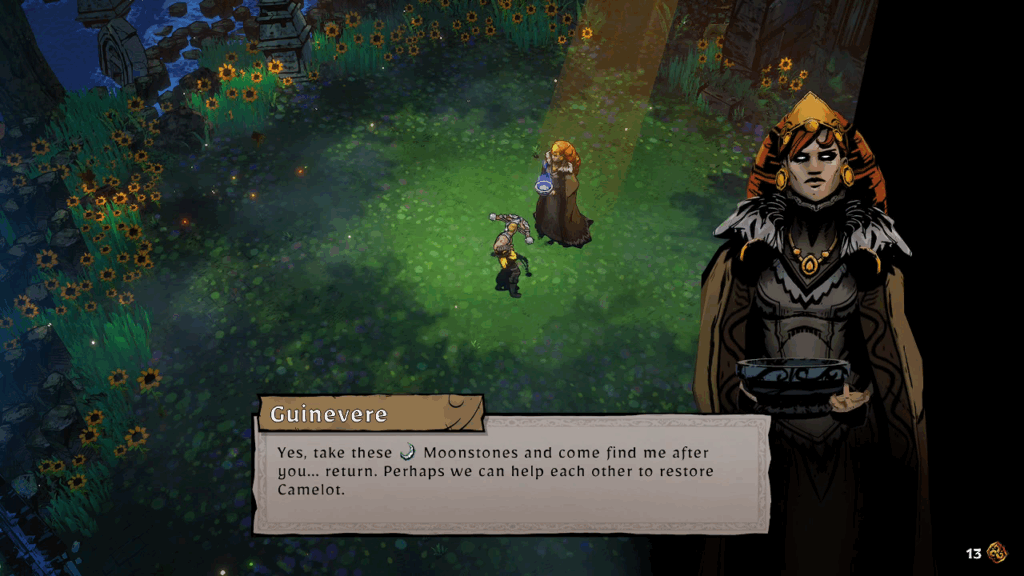
Maddening though the situation may be, these early failures are essential parts of the learning curve. They ease me into the particulars and peculiarities of SWORN’s action-RPG systems. It is the lessons learned from these early failures which contribute as much to the Soulforged’s success as the permanent upgrades purchased in Carmarthen and a lucky collection of temporary blessings from the Fae.
From the moment I begin a new game in SWORN, it is difficult not to be overwhelmed by déjà vu. A bar is sequestered to the side of the screen, giving me a quick visual breakdown of the Fae blessings the Soulforged has acquired on their current Quest. The Fae’s blessings themselves are curiously divided into rarity and power, separate measures that both mean “more power.” The Soulforged gathers darkly colored crystals they may exchange in Carmarthen for permanent improvements to their performance. When the Soulforged wields the Vigilante’s bow, I must hold and release the attack button with perfect timing, represented by an expanding translucent arrow on the ground, to increase the damage it deals. It’s immediately clear to me: This is Hades.
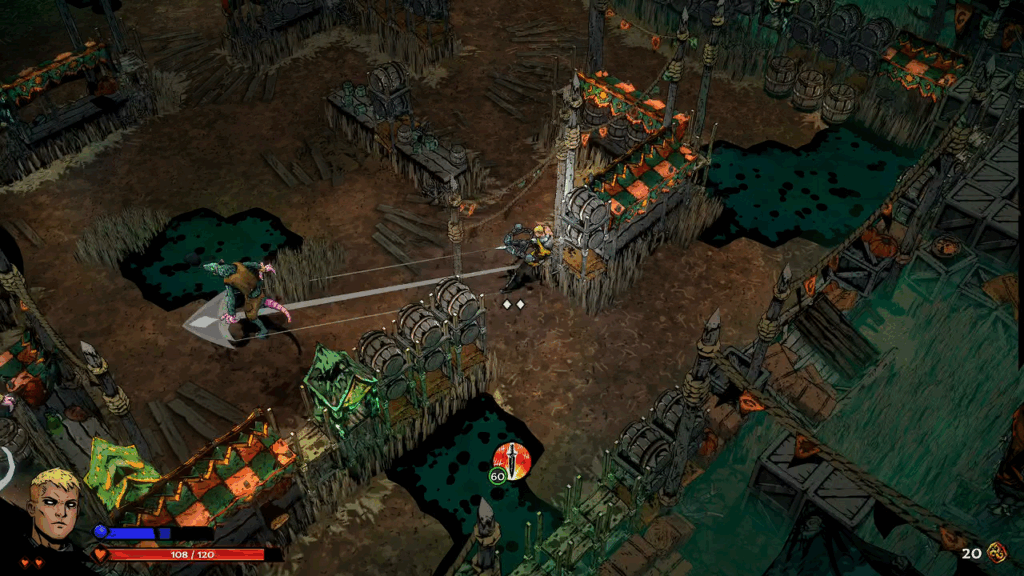
The déjà vu fades the more I play as I recognize the ways SWORN is fundamentally different and substantively inferior to Hades. Most significantly, Hades is built on furious speed and precise timing against large numbers of enemies. The Soulforged faces far fewer enemies at once and has greater success when I play more carefully and methodically. It only feels like it approaches Hades’ pace when a few Fae blessings push the Soulforged’s attack in that direction. Hades has deep and interesting characters, both those who dwell in the House of Hades and the Olympian gods who support Zagreus during his repeated escapes from his father’s domain. SWORN relies on me to know the Arthurian characters from prior knowledge. The supporting characters who shelter inside Carmarthen and the Fae who support the Soulforged make little effort to introduce or distinguish themselves and resort to generic statements after the third or fourth time they are met.
It is this pilfering from Hades that frustrates me more than anything else about SWORN. It is a competent videogame that has a lot of potential to grow into a great one. Yet it so blatantly uses Hades as a template that it is impossible not to comment upon, and cast in the light of that much better videogame, SWORN pales. Its sudden appearance in this, as I interpret it, partially-finished state, within a finger’s grasp of Hades 2’s launch, does not feel like a coincidence. I fear it may be remembered as the lukewarm imitator it is now instead of the great videogame it may some day become.
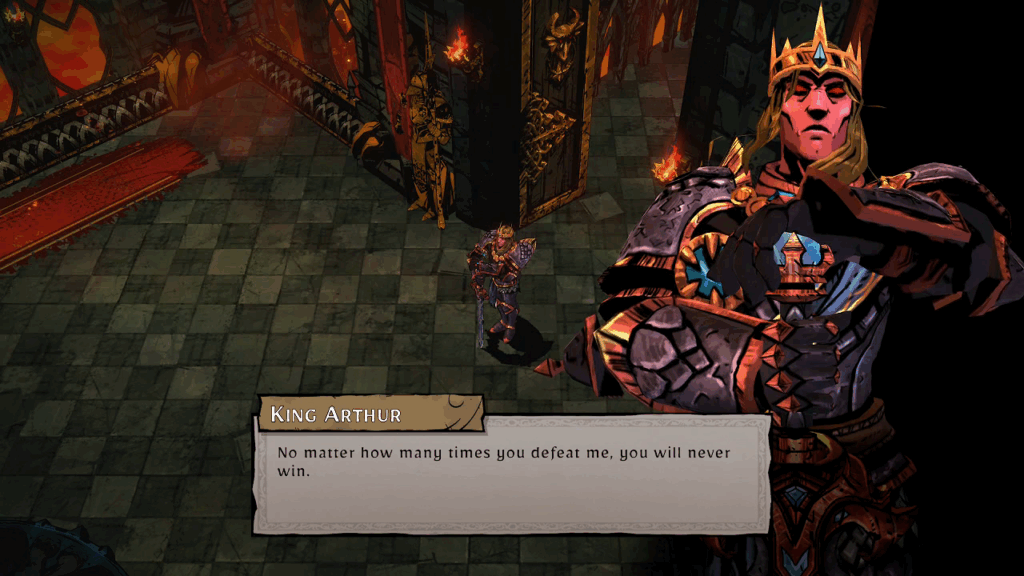
Appraising the product before me now, SWORN feels unfinished. It does not have a beginning or an ending. Arthur’s taunt that he can never be defeated should be satisfying to rub in his face when he finally, inevitably succumbs to the fate all men face. Instead, he is endlessly resurrected by a corrupted Grail that can never be purified because the means to do so do not exist, despite allusions by several characters. Though these missing narrative aspects deny me catharsis, mechanically, SWORN is sound. The amount of customization available for the Soulforged is impressive. I wish the Quest showed a similar level of breadth and complexity, but the new challenges presented by the ascendant difficulty levels are difficult to sneer at. I believe a player who clicks blissfully through cutscenes and dialog will have a fine time with SWORN. Those who need a resolution to a central conflict may want to wait a few months to see if the fuzzy white spots at the story’s beginning and ending are given greater clarity and substance.